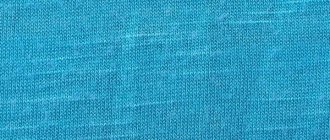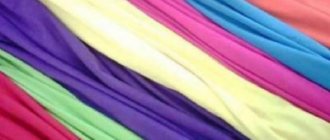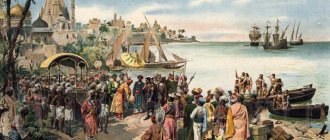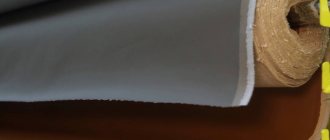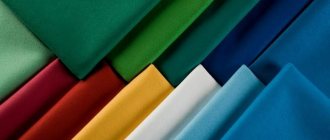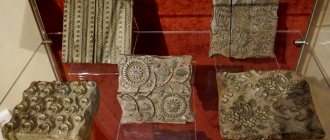History of fabric
Viscose is a young fabric. The technology for producing artificial fabric fibers from natural plant materials was invented at the end of the 19th century. Scientific developments were carried out earlier, but did not bring success. The French scientist Guiller de Chardonnay presented the world with the prototype of viscose in 1889. But his discovery did not spread further due to a significant drawback: the invented fabric was easily flammable.
Chemists from England Charles Cross and Edward Bevan improved the fabric production process and in 1892 received a patent for viscose. The material began to be used in the textile industry.
The name of the fabric comes from the Latin language, translated as “viscous”, reflects the process of creating the material from a thick viscous mass of recycled cellulose.
Fabric care rules
If the fabric consists of wood, then the question immediately arises of how to wash viscose. This material is difficult to care for; if not handled correctly, it immediately deforms, changes shape and becomes unattractive. Therefore, you need to adhere to the following recommendations:
- Items containing viscose must be washed by hand. And only if this is not possible (for example, due to health problems), you can use the washing machine on the “delicate” mode without spinning!
- Do not squeeze the product, but let the water drain. This way the material does not deform.
- Dry horizontally, carefully straightening the material.
- Iron at low iron temperatures or through wet gauze.
If these measures are not followed, the wear resistance of the fabric will increase, it will become deformed and lose color.
How it is produced
Viscose is produced from waste from the wood processing industry: tree bark and sawdust. The raw material for its creation is wood cellulose. The fiber creation process consists of successive steps.
- Prepare the raw materials. The wood is crushed into small chips and boiled in an alkaline solution under pressure for 24 hours. A gray viscous cellulose mass is obtained.
- The mass is squeezed through special small filters, forming fibers, and placed in an acid solution.
- The fibers are processed, given the required appearance and properties, bleached, and dyed.
- The resulting threads are dried.
Searched for with this fabric: bamboo fabric
Viscose threads can be divided into 3 groups:
- thin textile thread;
- durable and dense technical cord thread;
- short staple thread.
To create the fabric, various types of thread weave are used: plain, twill, satin, jacquard; products woven with finely patterned weaving are often found. The appearance of the fabric depends on the weaving method.
Kinds
The types of matter depend on its composition, processing method and raw materials.
Raw materials
- Modal. Ordinary wood is used
- Bamboo. Bamboo cellulose is as close as possible in its properties to natural cotton
- Siblon. Base – coniferous wood
- Tencel is a raw material from eucalyptus. This material is particularly durable and has antiseptic properties.
When are the biggest discounts on Wildberries? Find out with us!
Processing method
The threads obtained during processing may be different.
- The thinnest threads are called textile threads, textiles are made from them
- Technical threads are stronger and denser; cord materials are produced from them
- Wool is spun from staple fiber (short fibers of the same length), and as a result, fur, warm clothing, and carpets are obtained. You can learn about what a staple is from another article.
- Recently, the practice of felting from untreated viscose fiber has become widespread.
Application
- Viscose is used for sewing casual clothes for children and adults: dresses, skirts, T-shirts, blouses, shirts.
- The fabric is used to make beautiful evening dresses .
- The material is suitable for sewing home clothes , underwear and sleepwear.
- Home textiles are made from viscose : pillows, blankets, bedspreads, bed linen, curtains, tablecloths.
- The fabric is used as lining material .
- The material is used in the shoe industry to make the top layer of shoes.
Varieties
Tencel (lyocell)
The cellulose from which this fabric is made is obtained from eucalyptus. The material is silky, very soft, a fiber whose characteristics are closest to cotton.
Pros:
- increased strength;
- excellent hygroscopicity;
- breathability.
Minuses:
- low resistance to deformation.
It is used in the production of clothing, bed linen, and home textiles.
Modal
Consists of 100% wood cellulose, has all the properties of cotton, but in an improved version.
Positive properties of modal:
- one and a half times more hygroscopic than cotton fabric;
- environmental friendliness;
- high wear resistance;
- increased strength.
Modal is usually used in combination with cotton fibers for clothing and bed linen.
Acetate
Read about: acetate fabric: what is it, not synthetic, not natural, but what kind
For production, it is not cellulose in its pure form that is used, but its waste - cellulose acetate. Thin material, slightly shiny, resembles silk in appearance.
Advantages:
- low creasing;
- resistance to deformation;
- dries quickly.
Flaws:
- does not absorb moisture well;
- when exposed to acetone, the fibers dissolve;
- not resistant to high temperatures (melting point is close to 200 degrees).
Acetate silk is often used as lining fabric.
Cupra
It is made from cellulose, consisting of cotton, which is dissolved in a copper-ammonium saline solution. The material is close to silk and is considered the highest quality and most expensive type of viscose.
Advantages:
- ability to thermoregulate;
- excellent breathability;
- strength.
Flaws:
- require special delicate care;
- not environmentally friendly and expensive production process.
Cupra fabrics are used mainly for sewing evening wear. Products made from viscose require careful care, then the product will last a long time and will not lose its positive qualities.
Description of the fabric: properties and composition
A special feature of viscose is that it absorbs the properties of the fibers included in its composition. Cotton gives it density and softness, elastane gives it elasticity and the ability to stretch according to the figure, polyester adds strength to the fabric and reduces wrinkles. By changing the combination of fibers in the fabric, one production technology can produce a variety of materials, in one case suitable for sewing transparent summer blouses, and in another - for the production of the lining of a warm coat. Viscose has a wide range of colors, from plain fabric of various colors to fabric with bright floral prints and original designs.
The basis of viscose fabric is cellulose. Additionally, the fabric may include cotton and synthetic threads.
Viscose by type of finish:
- smoothly painted;
- printed;
- variegated;
- bleached.
Types of viscose materials
The textile industry offers various fabrics based on viscose threads.
Basic
Table. Main types of viscose fiber.
| Textile | Staple | Kordnaya |
| Used for sewing clothes and home textiles. | It is used in the manufacture of warm clothing, as well as carpets. | Used for reinforcing car tires. |
Winter viscose must be dense and durable in order to retain heat and not allow wind and cold to pass through. A tracksuit made from such fiber should “breathe” and not fade in the sun.
Viscose 100%
It is extremely rare. Soft delicate material. When wet, it loses strength and wears out quickly. Pure viscose stretches a lot and does not hold its shape.
Viscose knitwear
T-shirts, underwear, and sweaters are made from viscose soft and stretchable knitwear. Can be used as a monofilament or base for creating other fabrics.
Viscose for lining
Lining is a layer that guarantees the safety of the main fabric from which hats and outerwear are sewn. It has a slippery surface, does not deform when worn, is highly hygroscopic and comfortable. A combination with cotton and polyester is possible.
Author:
Zakharova Nina Afanasyevna
I hope you like my article! If you find any shortcomings, just write to me about it! I am always ready for a conversation and will answer any questions you have, ask them!
